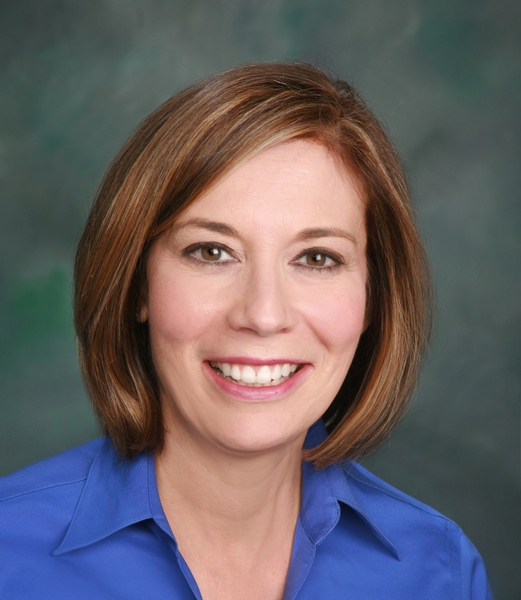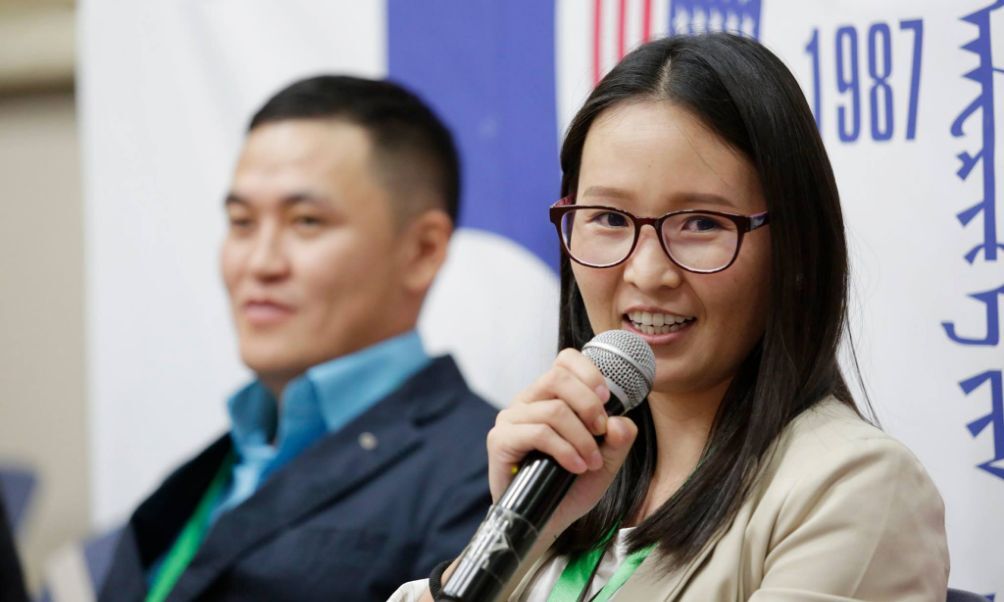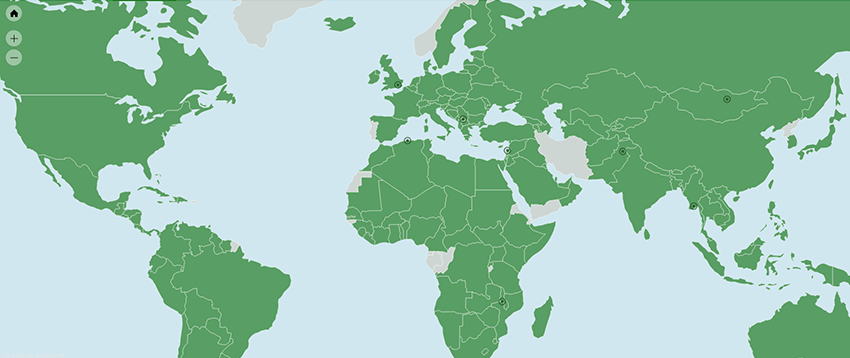-
What We Do
- WHERE WE WORK
-
About Us
 Welcome Message from Carol Jenkins
Welcome Message from Carol JenkinsFor more than 90 years, World Learning has equipped individuals and institutions to address the world’s most pressing problems. We believe that, working together with our partners, we can change this world for the better.
On my travels, I’ve had the opportunity to meet with many of those who have joined us in this mission. In Baghdad, we’ve trained more than 2,300 Iraqi youth who are already giving back at home. In London, our partners in the TAAP Initiative strongly believe that we are all responsible to practice inclusion. And in Vermont, our Experiment in International Living and School for International Training participants prove every day that they have the tools and the determination to change the world.
Please join us in our pursuit of a more peaceful and just world.
- Get Involved
Media Center > Press Room > Speech
Beijing+20: Progress on Article E on Gender and Armed Conflict
Remarks Type: Remarks as Prepared
Speaker: Donald Steinberg, World Learning CEO
Speech Date: July 21, 2015
Speech Location: Washington, DC
Honored guests:
I’m delighted to participate in this Society for International Development panel marking the 20th anniversary of the Beijing Conference on Women. Our topic today, what does meaningful progress look like in the gender and violent conflict agenda, is well-timed. I believe that we have finally reached the point – through the painstaking efforts of researchers and the tireless work of advocates – where the empirical case is clear: the full participation, empowerment and protection of women is an essential element in resolving deadly conflict and building strong, just, and effective post-conflict societies. An excellent review of the evidence was provided in the recent book, The Hillary Doctrine, by Valerie Hudson and Patricia Leidl. And while we still have to make these arguments every day for skeptics or cynics new to this arena, for today’s discussion at least, let’s take this reality as a given.
The previous speakers have outlined the current gaps and failures in our collective efforts to draw on the talents of women as peacemakers and engage women in rebuilding their countries. Let me build on this discussion by presenting eight specific actions that the United States, international organizations, host governments, and civil society activists can take to bring this agenda to reality. Most lists of this kind have ten items, but I’m offering a 20 percent discount for your participation here today.
First, the United States, the United Nations, regional bodies, and other sponsors of peace negotiations should adopt a minimum of 30 percent women’s participation as a pre-condition for their engagement in peace negotiations themselves and their subsequent support for implementation through peacekeepers and post-conflict reconstruction assistance. This is not just a question of fairness, equity, or human rights. It reflects the fact that processes that exclude women are two-thirds more likely to fail and thus result in loss of resources, credibility of the sponsors, and potentially peacekeepers’ lives. As we know, only one in 13 participants in major peace processes since 1992 is a woman, and that of 300 agreements negotiated since 1989, only 18 even mentioned the issue of sexual violence.
This requirement should be made in the form of a mandatory quota. For those who question the use of quotas in this context, let me remind you that more countries currently have quotas to mandate women’s participation in their own political and electoral processes than do not. If it’s good policy for the countries themselves, it’s good policy for peace processes.
Further, talented woman peace-builders face discrimination in legal, cultural and traditional practices, and threats of violence that make even the most courageous women think twice before stepping forward. The mandate for every peace process and peacekeeping mission supported by the international community should include provisions for training, financial stipends, and physical protection for women. And incidentally, international participants should walk their own talk by ensuring full leadership and participation of women in their own delegations to peace processes and post-conflict commissions.
Second, bilateral contributors and multilateral institutions should insist that post-conflict recovery packages prioritize issues related to basic human security, including reproductive health care, infant and child mortality, girls’ education, and psycho-social support for survivors of violence. There should be broad gender analysis and monitoring of all spending, with the goal of changing the current system in which only 3 percent of assistance in these settings is targeted directly at women’s needs. It is not unreasonable to require all projects proposed at donors’ conferences to have gender impact statements. In 2011, the U.S. Agency for International instituted this requirement for every project proposal in its entire portfolio, and the results have been impressive — if still incomplete — in terms of a prioritizing gender equality and women’s empowerment.
Third, donors engaged in post-conflict humanitarian and development assistance efforts should purposefully strengthen women’s civil society organizations, both directly and by using them to implement aid projects. Civil society groups are among the first victims of war, and their role in peacebuilding is essential to inform the process with ground truth, provide a safety valve for redress of grievances, and bridge political, ethnic, religious and regional divisions among populations. Women and women’s groups must be engaged not just as beneficiaries, but as planners and implementers of projects that go beyond traditional “women’s issues.” These groups should, for example, be given institutional support to distribute humanitarian assistance, establish dispute resolution mechanisms, and monitor elections. We are never as flush with resources as in immediate post-conflict periods: after the fighting stops and the cameras leave, the assistance money tends to dry up.
Fourth, the international community must fully engage UN Women in the peacemaking and peacebuilding agenda, backed by ample resources. No other institution is potentially as well-placed to serve as the eyes, ears and conscience of the global community in these situations, and yet UN Women has been largely bypassed in this agenda. Advocates for greater United Nations engagement in gender issues entered into a Faustian bargain a few years back to create UN Women. We abandoned our dream of a single agency with global reach and $1 billion in dedicated funding – a so-called “UNICEF for Women” — in exchange for a high-level office headed by an under-secretary-general who would oversee and coordinate contributions of other bodies. The U.S. and other advocates for women’s engagement must support this role and put their money where their mouths are through assessed and voluntary contributions at the $1 billion per year level, and pressure on the Secretary-General to engage UN Women as an active participant in all future peace processes.
Fifth, the United States should press to establish a permanent UN Security Council working group on women and armed conflict to monitor implementation of UNSC Resolutions 1325, 1820, 1889, and other resolutions. Such a working group exists under Resolution 1612 for children and armed conflict, and has made a huge difference in elevating this agenda.
A gender working group should take the lead in establishing time-bound measured goals for these resolutions, backed by monitoring mechanisms, accountability provisions, and enforcement structures. It should be empowered to issue a watch list of countries and non-state actors blatantly failing to meet their obligations as a means of naming and shaming them into improving their records. The Security Council should require periodic reports by the Secretary-General to the Security Council on these issues, and enshrine the principle that sanctions can be imposed on governments and non-state actors that abuse or fail to protect women. Similar measures should be adopted by regional organizations, such as the African Union, OAS, OSCE, and ASEAN.
Sixth, we must to emphasize the needs of women who, by virtue of their identity or circumstance, are marginalized in several different ways under the concept of intersectionality. Most women in conflict situations are also part of other marginalized groups: displaced persons or refugees, people with disabilities, lesbians and transsexuals, indigenous populations, and ethnic, racial, and religious minorities. The Women’s Refugee Commission has highlighted, for example, the challenges facing displaced women, including preventing sexual violence in camp settings and in the collection of firewood; expanding livelihood, health, education and reintegration programs; mainstreaming psychosocial considerations in protection and services; training camp managers and protection forces; and properly configuring camps.
Seventh, the United States, NATO, and other sponsors of security sector reform must require new attention to gender considerations in these efforts. This is where the rubber meets the road in protecting and supporting women. All programs to rebuild and reform armies, police and other security forces should include effective training in gender issues and quotas for women’s participation in these units. Bringing women into forces and establishing community and family policing units increases the likelihood that women who have been abused will come forward with accusations and seek assistance. Foreign troop contributors to peacekeeping operations – such as the UN, NATO, African Union, and bilateral contributors — should lead by example, ensuring full participation of women in their forces and that all forces are trained in gender considerations.
Finally, even as we focus on these broader institutional changes, we must “follow the buck.” There must be a quantum leap in financial resources dedicated to these efforts, provided through both assessed and voluntary contributions. At the level of the United Nations, we need to see a three-to-four-fold increase in support for women in the context of armed conflict, up to $1 billion per year – which is still only about 30 cents per woman. The United States should propose that the UN commemorate the 15th anniversary of UNSC Resolution 1325 in late 2015 by hosting a global pledging conference at the presidential or ministerial level. Member states would challenge each other to come forward with formal commitments on concrete actions they will take over the next three years to promote the Resolution’s agenda. Partnerships could be encouraged linking new resources from donor countries and new political will from conflict-affected countries, on the model of commitments made at the Clinton Global Initiative.
This is a broad and ambitious agenda, and some would ask whether we can afford it. My response: we can’t afford not to make these investments. There is now a growing recognition not only of the importance of this agenda for promotion of our global human rights agenda, but also of the links between global women’s empowerment and our own national security. We understand that societies that engage, empower, and protect women as less likely to engage in trafficking of drugs, people and weapons. They are less likely to send off huge numbers of refugees across borders and even oceans. They tend not to incubate and transmit pandemic diseases, and to harbor and grow terrorists, criminal networks, and pirates. And they don’t require foreign military assistance or boots on the ground. It sounds like a great investment to me. Thank you.





